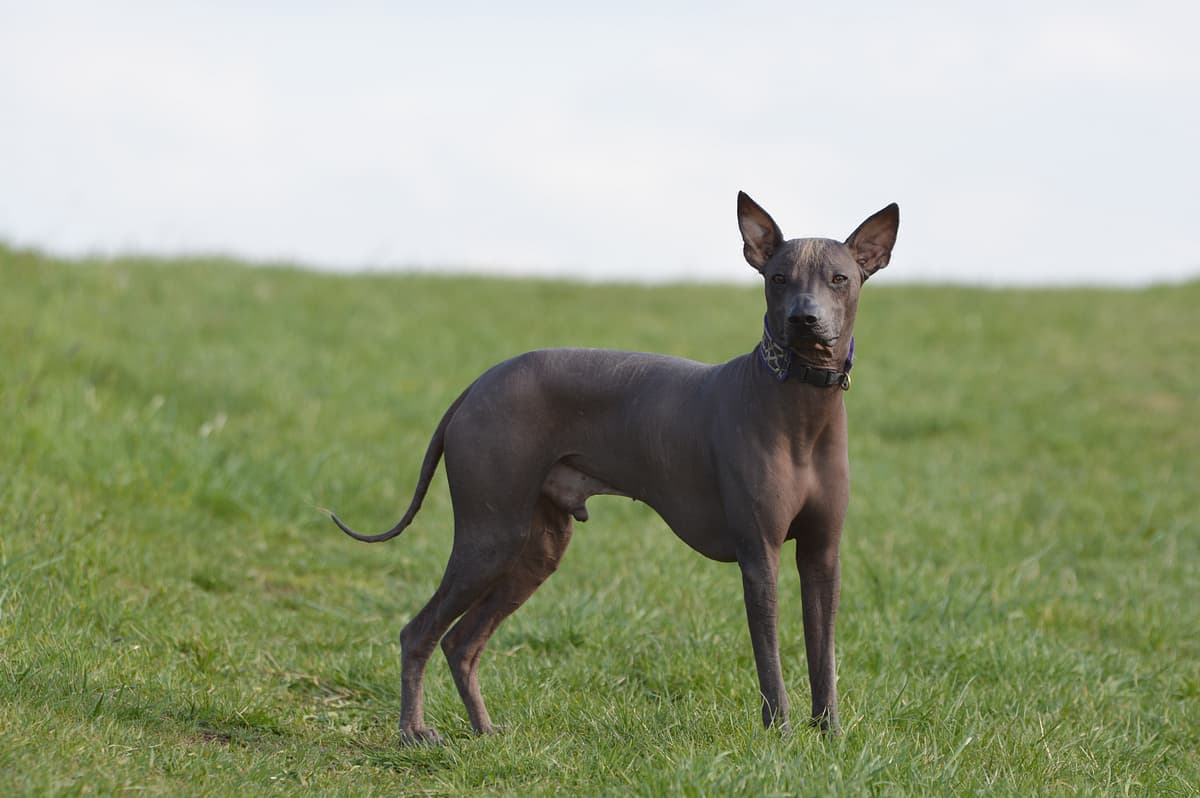Peruvian Hairless Dog vs Labrador Retriever
Discover the differences between Peruvian Hairless Dog and Labrador Retriever to make the best choice for your situation.
Try different breeds

Peruvian Hairless Dog
Elegant, affectionate, and alert, this ancient breed thrives as a loyal companion. Its hairless body and sensitive nature make it both striking and loving in the home.

Labrador Retriever
Eager, friendly, and intelligent, this breed loves being part of an active family. Their gentle nature and loyalty make them outstanding companions for all ages.
Quick comparison
Medium
8–12 kg
Hairless, smooth skin
12–14 years
7–11 kg
Moderately active
Large
29–36 kg
Short double coat, water-resistant
10–12 years
25–32 kg
High energy
Personality & behavior
Compare the personality traits and behavioral characteristics of both breeds.
Peruvian Hairless Dog
Generally sociable but may be reserved with strangers
Learns quickly and responds well to training
Moderate activity needs, enjoys regular exercise
Occasionally playful, but not overly boisterous
Adapts well to various home environments
Labrador Retriever
Warm and sociable with people and animals
Quick learner, responds well to training
High stamina, enjoys active pursuits daily
Loves games and interactive activities
Adjusts easily to new situations and environments
Care needs
Exercise, grooming, and daily care requirements
Peruvian Hairless Dog
Skin problems, dental issues
Labrador Retriever
Hip dysplasia, elbow dysplasia
Suitability
How well each breed fits different living situations and families
Peruvian Hairless Dog
Moderately suitable
Sensitive and intelligent, but may need patient training from inexperienced owners
Good fit
Quiet and clean, adapts well to smaller living spaces with enough exercise
Highly suitable
Enjoys regular physical activity and will keep up with energetic routines
Use caution
Can be gentle but may not tolerate rough handling from very young children
Selective companion
May get along with other pets if socialized early, but can be wary
Not ideal
Strong attachment to people can cause stress when left alone for long periods
Labrador Retriever
Great choice
Patient and eager to please, Labradors are manageable for most first-time owners.
Not ideal
Labradors need space and exercise, so apartments can limit their activity needs.
Perfect fit
High energy and stamina make them excellent for active individuals or families.
Highly suitable
Gentle temperament and playful nature make them safe and loving with young children.
Very friendly
Generally sociable and get along well with other dogs and pets.
Prone to anxiety
Extended alone time can lead to boredom and destructive behaviors in this breed.
Breed strengths
What each breed excels at and their best qualities
Peruvian Hairless Dog
- Loyal and strongly bonds with family
- Minimal shedding due to hairless coat
- May be hypoallergenic for some owners
- Intelligent and quick to learn commands
- Generally alert and makes a good watchdog
Labrador Retriever
- Friendly and sociable with people and dogs
- Highly trainable and eager to please
- Excellent with children and families
- Strong retrieving and swimming abilities
- Generally adaptable to various living situations
Challenges & considerations
Potential challenges and considerations for each breed
Peruvian Hairless Dog
- Sensitive skin requires sun protection
- Prone to dental issues from missing teeth
- Can be wary of strangers or new situations
- Needs regular moisturizing to prevent dry skin
- Sensitive to cold and temperature changes
Labrador Retriever
- Prone to obesity without portion control
- Can become destructive if under-exercised
- Heavy seasonal shedding requires regular grooming
- May develop hip or elbow dysplasia
- Needs significant daily physical activity
Ready to choose your perfect breed?
Learn more about each breed or compare other breeds to find the perfect match for your lifestyle.
Discover more helpful tools
Make use of our other free tools to get the most out of your pet experience
